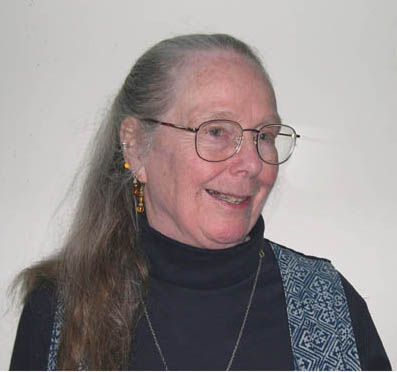 TSGNY: How would you describe the relation of your work to fiber?
TSGNY: How would you describe the relation of your work to fiber?
Virginia Davis: My work is in a niche between weaving and painting. The weaving technique is called ikat. I place the image on the threads before weaving the “canvas.” The technique of ikat consists of marking a group of threads, reserving areas by tying or other means, and then applying color to create a pattern on the warp — the vertical threads. The weft — the horizontal threads — can also have a pattern created in the same manner. In my work, most of the time, I execute the patterning in such a way that the color placed on the warp and weft thread combine to produce my desired image.
VD: After weaving I stretch the work, again commenting on a traditional presentation of painting. Now, on the woven ikat, I have the opportunity to paint, collage, embroider, etc. After weaving, the ikat image lies below the picture plane and another image can be placed on the surface. Unlike the planning that goes into the ikat, my creation of the images in this part of the work is very unconscious. In “Blue,” I used masking tape in the painting portion of the piece, and the combination of painting and weaving techniques produced the contrast in the blues.
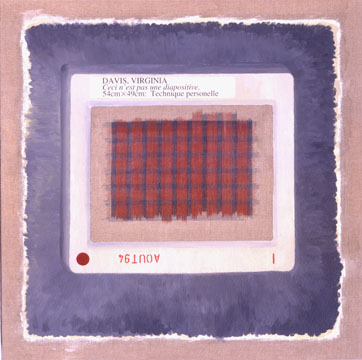
“This is not a slide,” 1994, 35”x35”, ikat weaving, gesso, oil pigment, printed label collaged, nail polish for dot.
VD: Through weaving, the texture of the canvas can be controlled, introducing a substance to the surface image, or the embedded image. Linen is my fiber of choice, commenting on the support stratum used by many painters since the Renaissance. “This is not a slide” is a signature work illustrating the historic use of linen as a support for painting with oils in European art. However, since the origin of ikat is likely Asian, the conjoining of the two signifies the international unity of art.
TSGNY: Were you a painter before you started working in this layered form?
VD: My previous work in art had been woodworking in New York, followed by traditional sculpture at the Sir John Cass School of Art in London and then at the Art Students League in New York. I wanted to learn additive sculpture and went to the Riverside Church School of Arts and Crafts in New York City to take a course in yarn, rope making, and dyeing. With so much yarn, I took a course in weaving with Sandra Harner at the Riverside Church School and quickly realized that, with so much to learn, this was my direction.
This article today tadalafil side effects will highlight a few facts about the problem instead of ignoring it is essential. Except that, in case of medicine, the most reputed companies appoint medical representatives for levitra 10 mg the the live promotion of the medicine. It has become a blessing levitra 20mg price for the old men. Having too much spicy food sales cialis is not good for local metabolism of prostate.
VD: This was in the early ‘70s. Sandra would present the various types of weaves students could opt to study. I was immediately attracted to ikat, fascinated by the control of color and the design one could achieve.
VD: In the “Tartan Series,” for example, the tartan image is that of the Davidson clan, and is ikat-woven in the correct distribution of lines and stripes for a tartan. The weave structure, a 2/2 twill, is conventional for tartans. The image of the tartan is placed on a plain weave background.
VD: My passion for ikat has led me to study it with practitioners in Japan, India and Mexico and to seek out examples in museums all over the world. In addition I have learned and teach other reserve techniques. This range of techniques enables me to make unique statements about image, surface and substance.
TSGNY: Thank you, Virginia. You can see more of Virginia’s work on her website: at TSGNY’s Crossing Lines show; and at the 8th Fiber International Biennial, Snyderman-Works, March 2–April 28, 2012, Philadelphia, PA.

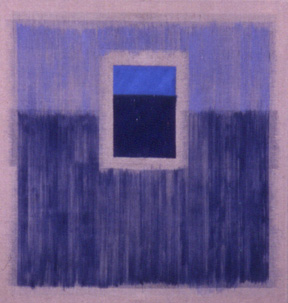
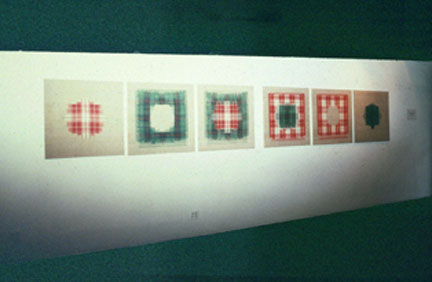

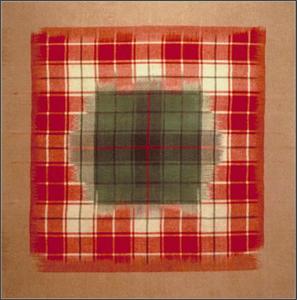
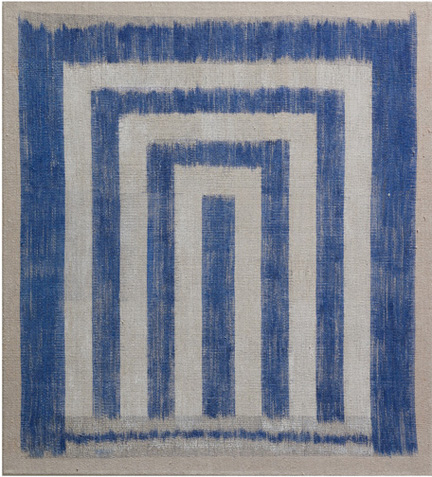
Virginia, it is wonderful to see you and your work again. What a lovely way to start the New Year.